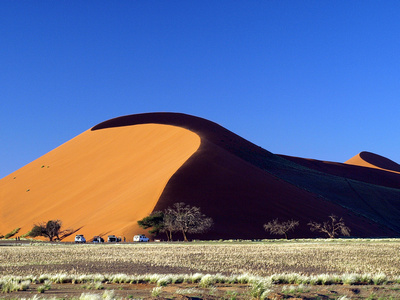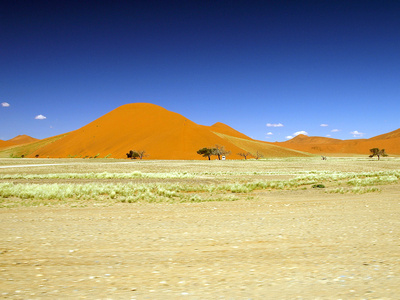
COMPOSITION BASICS (note the ways these basics are applied in the above photos)
- rule of thirds--do NOT put your subject in the very center of the frame (rare exceptions)

- position your subjects @ one of the power points instead
- the rules apply to vertical shots also
- turn on the gridlines on your camera to help you position your subjects
- leading lines -- draw your viewer into the photo
- a path/roadway
- actual lines
- parts of a plant
- clouds, etc
- color--selective use of color to emphasize or contrast
- depth of field
- foreground, midground, background
- change depth of field by changing the aperture (f-stop)
- smaller aperture numbers result in less depth of field and more light entering the camera
- useful for portraits since the background is more blurred
- the smaller the aperture number, the more blurry the background
- larger aperture numbers result in greater depth of field and less light entering the camera
- useful for landscapes since more of the photo from foreground thru background is in-focus
- smaller aperture numbers result in less depth of field and more light entering the camera
- cropping in the view finder
- compose your photo such that you have it cropped mostly the way you intend for it to look in the final viewing
- look @ the edges of your photo & make sure you’ve cropped out anything inappropriate or unappealing
- if necessary, get closer/zoom in or change your shooting angle, etc
- change your position when shooting
- stand up, bend down, back up, walk around the object & assess different angles
- look for unique perspectives on common or popular subjects
- stand up, bend down, back up, walk around the object & assess different angles
CAMERA BASICS—try to be familiar w/ all of these settings & in general become familiar w/ every button & knob/icon on the camera body (usually these are quick ways to set commonly used parameters w/o having to scroll thru the full camera menu)
- white balance (WB)-set to cloudy, sunny or AUTO when outdoors
- AUTO WB is very good on newer cameras, but it sometimes will struggle to get the correct light color in difficult lighting situations indoors, especially
- Learn to set a Custom White Balance for these situations; there are many tutorials for various camera models out there on YouTube & other photography blogs
- AF points-- selective AF vs continuous AF vs MF
- the center AF point is typically the most accurate/sensitive
- you can also choose different points, depending on your subject
- recomposing shot after setting focus point
- focus on subject
- hold shutter button half-way down until the focus lock beeps
- while holding shutter button half-way down to keep focus locked, move the camera so that the subject is on a power point
- NOTE: if the depth of field is really shallow, this could put part of your photo out of focus when you move to recompose, ultimately, learn to recompose by using your focus points (move the focus point to the desired spot instead of moving the camera
- BIGGER NOTE: Given that most cameras have multiple AF points, it's better to move the focus point to the subject that you need to be in focus than to move the camera.
- ISO--typically 100-200 is good for sunny days
- the lower the ISO number, the more light is required to get proper exposure
- in situations where you cannot use flash or light is limited, increase the ISO number to help you get the proper exposure and prevent camera shake
- there is a trade-off in photo quality (ie, graininess/noise) the higher the ISO number gets
- for most point & shoot cameras, ISO 800 is probably your max choice to avoid really grainy/noisy photos
- for many newer DSLRs, their ISO is excellent up to 1600 or 3200 with minimal noise
- use gridlines to assist w/ level shots (if no level in camera) & w/ rule of thirds
- A-mode (aperture priority) vs S-mode (shutter priority) vs AUTO (you can change nothing) vs PROGRAM (auto with the ability to change certain parameters)
- Aperture priority— the aperture & resulting depth of field is usually the most important consideration for most photos, hence the reason really fast lenses with really big apertures are really expensive!
- You pick the aperture & the camera sets the shutter speed; ISO stays as you’ve chosen
- Lower aperture numbers usually give the best depth of fields for close-ups & portraits as the background is blurred
- Consider aperture mode a 1/2-way manual mode
- You pick the aperture & the camera sets the shutter speed; ISO stays as you’ve chosen
- Shutter priority
- Useful for action shots to stop motion, using faster shutter speeds
- You pick the shutter speed & the camera sets the aperture; ISO stays as you’ve chosen
- Faster shutter speeds stop motion, but require lower apertures to be exposed properly
- For moving subjects, consider AI servo AF—predictive auto focus—which will refocus on a moving subject as you follow it with the camera
- AUTO
- The camera sets EVERYTHING and you can change NOTHING in this mode except for the AF point & your composition
- The camera decides what exposure to use
- its choice of exposure, while technically correct, is not necessarily the best in terms of artistic choice
- if you are in a situation which requires a quick shot, AUTO may be your best option vs trying to set manual settings in a hurry
- get the shot & hope it’s OK vs not getting any shot because you’re messing with your settings
- The camera decides what exposure to use
- The camera sets EVERYTHING and you can change NOTHING in this mode except for the AF point & your composition
- PROGRAM
- Camera sets aperture & shutter speed for you, but you can change certain parameters (WB, ISO, etc)—which vary with your camera
- With Program Shift, you can change the aperture/shutter speed combo, typically by holding the focus button down halfway & then using the command dial to change the combo
- Aperture priority— the aperture & resulting depth of field is usually the most important consideration for most photos, hence the reason really fast lenses with really big apertures are really expensive!
- image stabilization (in camera vs on lens)
- this allows you to hand-hold shots that used to require a tripod by preventing camera shake & blur at slower shutter speeds
- the standard rule for hand-held shots is:
- if you’re shooting @ 150 mm, your shutter speed should be @ least 1/150
- if you’re shooting @ 200 mm, your shutter speed should be @ least 1/200
- if you’re shooting @ 400 mm, your shutter speed should be @ least 1/400
- IS allows you to override this rule & shoot @ somewhat slower shutter speeds than the rule
- multishot/servo mode vs single shot--good for moving subjects & may help get in-focus shot if you have long shutter speeds
- in multi-shot/burst mode, you may manage to capture an in-focus shot even when you’re technically shooting @ too slow of a shutter speed
- predictive autofocus will refocus continually on a moving object
- filters
- circular polarizer
- makes skies much bluer
- decreases glare on water & thru glass
- decreases the amount of light coming thru the lens, so you will need to have watch for motion blur
- UV “protective” filter
- protects your lens & helps cut glare
- buy a high-quality one
- if you put a cheesy filter on your expensive lens, you might as well not have paid the money for the lens
- B+W & Tiffen are good choices
- buy a high-quality one
- protects your lens & helps cut glare
- circular polarizer
- camera manual—bring it with you or download it to your smartphone so that we can adjust settings on your cameras if needed
- I can’t memorize all camera brand settings :)
- you should plan on reading the manual to help learn settings
- tripod—not necessary today, but for HDR work and long exposures where camera shake will cause blur, you will need one
- photo quality-- always shoot highest quality JPG or RAW (will need to be converted JPG for viewing/uploading); you can always make the photo smaller, but you cannot increase quality if it's not there to start with
WHAT TO DO WITH ALL OF THE OUTPUT
- storage & backup—on computer HDD, on one or more portable HDD’s, RAID system, online (Zenfolio, SmugMug, Flickr, etc)
- photosharing & viewing sites vs storage & sharing (DropBox)
- and backup some more (consider having a copy off site)
- develop a “filing” system to keep track of your photos—don’t just use the camera default filenames
- never alter/edit your original “negative”
- watermarking
- JPG vs RAW
- delete the crappy ones— blurry, poorly exposed, boring, etc
- Learn to be ruthless as digital photography has resulted in @ least 10-20x more output than film
PHOTO SOFTWARE
- Photoshop & PS Elements
- Lightroom
- ACDSee Pro
- Photomatix (HDR)
- Photomechanic
- whatever came with your camera-- each camera brand has its own basic photo editing software
© 2014 fatCATfoto by Christine Nimitz
]]>
Some are informational sites about equipment such as filters, some are links to specific techniques for subjects like fireworks & others are general photography info & camera basics sites. Many sites have free tutorials you can subscribe to via Facebook or email.
First DSLR Crash Course
The Dark Side of Metering
http://www.thephoblographer.com/2010/11/13/the-dark-art-of-metering/
Master the SUNNY F/16 rule
3 stupidly simple reasons why most people's photography does not improve
How to take photos that stand out from the crowd
http://digital-photography-school.com/how-to-take-photos-that-stand-out-from-the-crowd
BH PhotoVideo filter guide
http://www.bhphotovideo.com/indepth/photography/buying-guides/filters-lenses
Fireworks (Olympus settings)
fireworks PAC blog
http://blog.photographersadventureclub.com/amazing-fireworks-tips/
BH PhotoVideo watermark article
http://www.bhphotovideo.com/insights/blogs/bh-insights/pros-and-cons-watermarks.html
12 Photography Cheat Sheets
http://www.photoventure.com/2013/07/01/12-photography-cheat-sheets-that-will-change-your-life/6/
10 Phases of HDR Photography
http://digital-photography-school.com/10-steps-every-hdr-photographer-goes-through
Do I really need a UV filter?
ISO: The good, the bad, the ugly
http://www.photographytalk.com/photography-articles/3242-iso-the-good-the-bad-and-the-ugly
10 Reasons to Use a Tripod Besides Long Exposures
25 Landscape Photography Tutorials
http://digital-photography-school.com/landscape-photography-tips
7 Tips for Sharper Photographs
http://www.thephoblographer.com/2013/09/29/7-tips-for-sharper-photographs/
Photographers’ Rights
http://www.photographytalk.com/photography-articles/3203-photography-do-you-know-your-legal-rights
An excellent blog post (w/ accompanying beautiful photos of Butchart Gardens, Victoria, BC) about why we, as photographers go back to the same sites to shoot over & over again.
http://annemckinnell.com/2013/11/25/photography-locations-revisit-reshoot/
10 Travel Photography Tips to Help You Avoid Regrets When You Get Home
Learn to Read the Contrast of a Scene Just by Looking at It
Depth of Field Calculator
http://www.cambridgeincolour.com/tutorials/DOF-calculator.htm
White Balance Explained
]]>
]]>
The golden hours around sunrise & sunset really do provide some magical light. Shadows & warm colors abound. When you get the alpenglow colors, the whole feel of the photo changes. These wonderful changes occur because the angle of the sun differs then versus at midday when the angle is almost directly above and there are no nice shadows.


The above photos illustrate the changing (and less-desirable) light that occurs in the morning at 8am versus later in the day at 1230pm. All the shadows that give Dune 45 in the Namib Naukluft Park in Namibia its characteristic profile are gone by midday. It's still a nice photo, but see what you miss if you don't shoot around sunrise or sunset!!
Depending on what you want to convey with your photos, the light is everything. If it's cloudy, does that mean you can't shoot? Of course not, but you need to assess how you're going to shoot to make the most of the [grey] light you do have. With clouds, there are no harsh shadows or glare, so sometimes you can get very nice colors without dealing with difficult shadows or contrast.
Sometimes you don't have a choice of when to shoot because you're on a tour with a schedule that you must follow. Learn to make the best of the situation and figure out how to get the best shot you can with the available light.
© 2012 fatCATfoto by Christine Nimitz
]]>